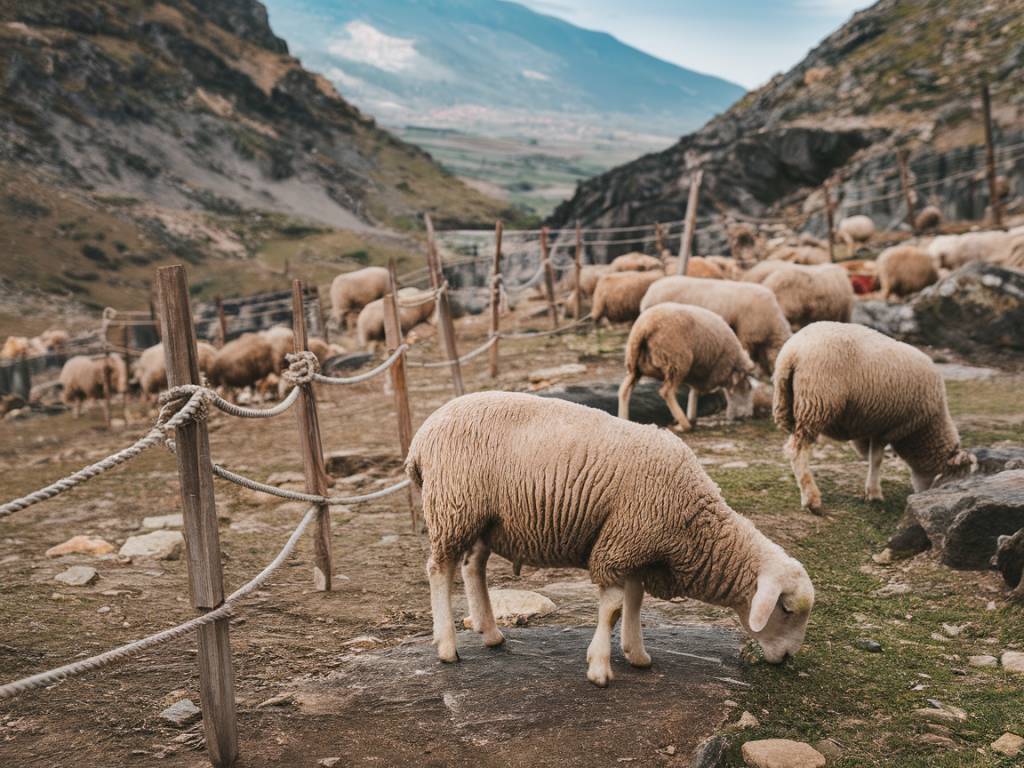Age-old sheep farming practices and their effect on the land

Age-old sheep farming practices and their effect on the land
Sheep Farming Through the Ages: A Timeless Tradition in Wales
Wales, with its rolling green hills and rugged mountains, is a land steeped in history and heritage. Among its most enduring traditions is sheep farming—a practice that has shaped not only the landscape but also the culture of this enchanting region for centuries. But how did sheep farming come to define Wales so deeply? And what impact have these age-old practices had on the land? Let’s uncover the story of this ancient art and its profound effects.
The Roots of Welsh Sheep Farming
The history of sheep farming in Wales can be traced back more than 3,000 years. Evidence suggests that sheep were among the first domesticated animals brought to Britain during the Bronze Age. However, it was the Romans who expanded sheep husbandry significantly, recognizing the quality of wool produced in this region.
By the Middle Ages, Welsh hillside farms were buzzing with the bleats of sheep. Monasteries in Wales became major centers of wool production and trade, contributing to the nation’s growing reputation across Europe. In fact, the Cistercian monks of places like Strata Florida Abbey played an instrumental role in perfecting sheep farming techniques.
Centuries later, the Act of Union during Tudor times helped integrate Wales into the broader English wool trade. Sheep farming became not only a way of life but also a vital component of the Welsh economy, giving rise to the iconic pastoral landscapes we admire today.
The Symbiotic Dance Between Sheep and Landscape
One of the most remarkable aspects of Welsh sheep farming is its profound connection to the land. While shepherds guide their flocks, the flocks in turn shape the terrain. Sheep grazing has created the patchwork vistas of moorlands, meadows, and uplands that are synonymous with Wales.
For instance, the Brecon Beacons, Snowdonia, and the Cambrian Mountains owe much of their open, grassy expanses to centuries—if not millennia—of grazing. Without sheep, the land would likely revert to dense shrublands or forests, dramatically altering the ecological balance.
Of course, this relationship isn’t without its challenges. Overgrazing can lead to soil erosion and the loss of native flora. Yet, many modern farmers are embracing sustainable practices aimed at preserving this delicate equilibrium. By carefully managing grazing patterns and reintroducing native plants, the synergy between sheep and the land continues to evolve.
Traditional Farming Practices That Endure
Welsh sheep farming is more than an economic activity; it’s a way of life rooted in tradition. Many farms still follow methods passed down through generations, preserving an invaluable piece of cultural heritage.
Take “hafod and hendre,” for example—a seasonal practice where farmers historically moved their flocks between summer upland pastures (hafod) and lowland winter pastures (hendre). While this practice has become less common, its legacy is evident in place names across Wales and in the oral histories of farming families.
And who can overlook the iconic role of Welsh shepherds? With their trusty sheepdogs at their side, they navigate the steep hillsides, relying on an almost telepathic connection with their canine companions. These hardworking dogs are more than helpers; they’re an integral part of the farming ecosystem.
The Impact of Sheep Farming on Welsh Heritage
Beyond its environmental contributions, sheep farming has profoundly influenced Welsh heritage. It’s intertwined with the language, music, and folklore of Wales. Sheep and wool have inspired traditional crafts, including weaving and knitting, which remain vibrant aspects of the culture.
Even Welsh cuisine nods to this pastoral legacy. Welsh lamb is celebrated worldwide for its exceptional quality, the result of sheep grazing on nutrient-rich grasses and heather in pristine environments. From slow-cooked lamb cawl to herby lamb chops, these dishes tell the story of a deep-rooted farming tradition.
Sheep also make frequent appearances in Welsh proverbs and songs. Who could forget the charmingly quirky observation, “Y mae pob dafad yn nabod ei heunydd” (“Every sheep knows its Friday”)? Phrases like these encapsulate the wit and wisdom of rural life in Wales.
Modern Challenges and the Future of Sheep Farming
Today, Welsh sheep farming faces its share of challenges, from rising costs to the effects of climate change. Some farmers grapple with uncertainties brought on by trade agreements and shifting consumer preferences. Yet, there’s resilience in the community—a determination to adapt while preserving the heart of their craft.
Innovations in sustainable agriculture are making their way into sheep farming. Organic practices are growing in popularity, as are initiatives to restore biodiversity on grazing lands. Moreover, the rise of agritourism provides an opportunity to connect visitors with the heritage of Welsh sheep farming. What better way to understand the land’s story than by visiting a working farm?
Walking the Sheep Trails
For those who want a more intimate understanding of sheep farming’s legacy, exploring Wales on foot offers a magical glimpse into this world. The country’s network of public footpaths often traverses ancient sheep trails, leading you through open fields, shaded hedgerows, and windswept peaks.
Keep an eye out for sheepfolds, dry-stone walls, and shepherd’s huts—silent witnesses to centuries of farming history. And don’t be surprised to encounter a curious sheep or two along the way. After all, in Wales, you’re never far from a flock!
Preserving a Timeless Tradition
Sheep farming in Wales is more than just an agricultural practice—it’s a living connection to the past. Whether it’s the way sheep harmonize with the landscape, the enduring heritage of wool production, or the delicious lamb dishes that grace dinner tables, this tradition continues to shape the identity of Wales.
Next time you find yourself admiring the breathtaking Welsh scenery, remember the humble sheep and the generations of farmers who have cared for them. Their timeless partnership with the land is an enduring story of resilience, harmony, and heritage—a story that will hopefully continue for centuries to come.





